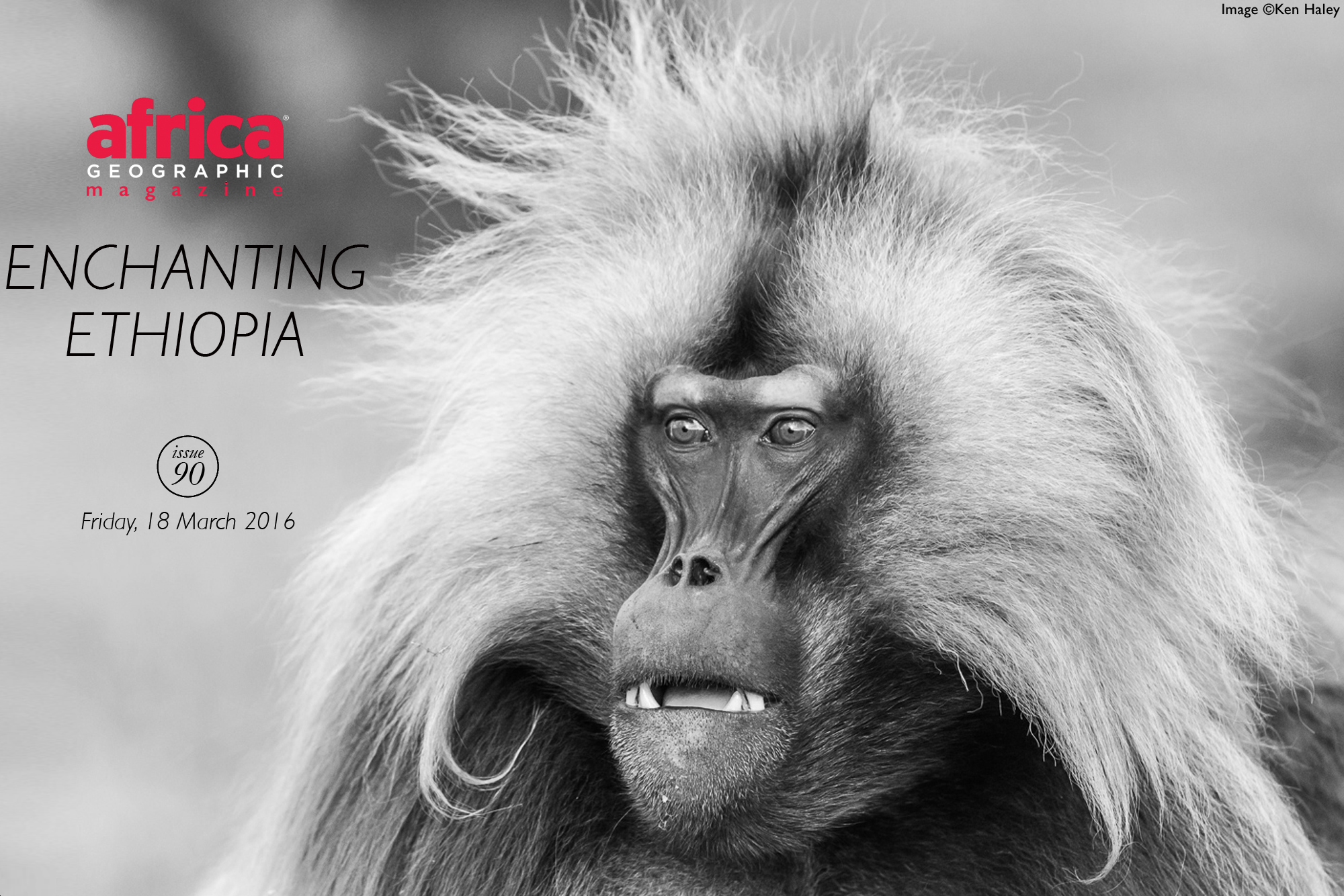
Hiking alongside rare wildlife in a country steeped in history

Our trip to Ethiopia was very spur of the moment. Three days after deciding to go, we found ourselves trekking in the Simien Mountains in the north of the country, one of the most stunning places I have ever hiked. To many people, Ethiopia may be synonymous with civil war, coups, drought and famine, but Ethiopia is becoming a country to which more and more people are starting to venture. It is a beautiful, dynamic and fascinating place, and the people we met on our trip were some of the friendliest, most welcoming and professional I have come across in my African travels.
We had decided to combine a five-day, approximately 60km trek with a few days spent checking out some of the country’s incredible cultural sites. Our Simien hike would conclude with a climb up Bwahit – Ethiopia’s second-highest mountain. At an altitude of 4,437 metres, Bwahit was a five-hour hike and a one-kilometre vertical ascent above our final campsite, taking us up into the clouds and giving us a stunning view of where we had hiked the previous days.
Once we left the mountains, we planned to head off to see some of the oldest and most incredible historical sites on the African continent.
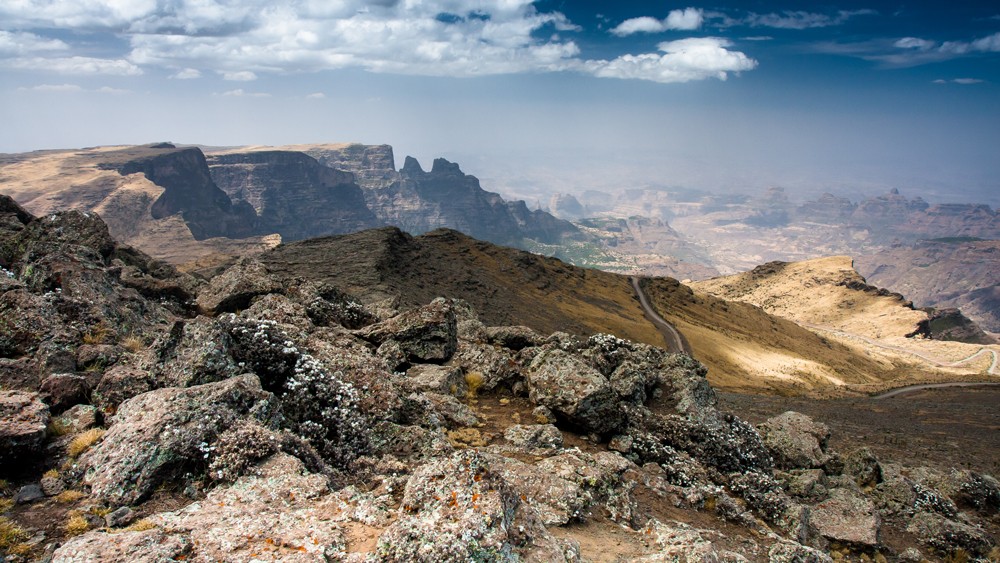

In the Earth’s long history of dramatic geographical changes, the most recent volcanic upheavals occurred in this part of Africa. Torrential rains in the region created gushing rivers and waterfalls, eroding much of the newly formed volcanic mountain massifs, leaving behind a broad plateau split by thousands of metres deep gorges. As far as the horizon in every direction are steep mountains and deep valleys carved from the hardened basalt – a seemingly timeless landscape. Listed as a World Heritage Site, the Simien Mountains are breathtaking.
Late, unexpected rain had come to the Simiens, just in time for our visit. The dry season runs from October to April, and October and November are usually the best times to visit, so we had come in mid-November. We had perfect morning weather, lasting long enough to get six or seven hours of trekking done. But just as we approached the camp, or not long after arriving, the weather would close in, and light rain would start falling. The rain usually lasted most of the night, making getting out of a sleeping bag, battling with stubborn tent zips and going out to ‘commune with nature’ a bit of a chore. We were generally in bed by 8pm, so the morning was far away and presented a challenge for bladders.
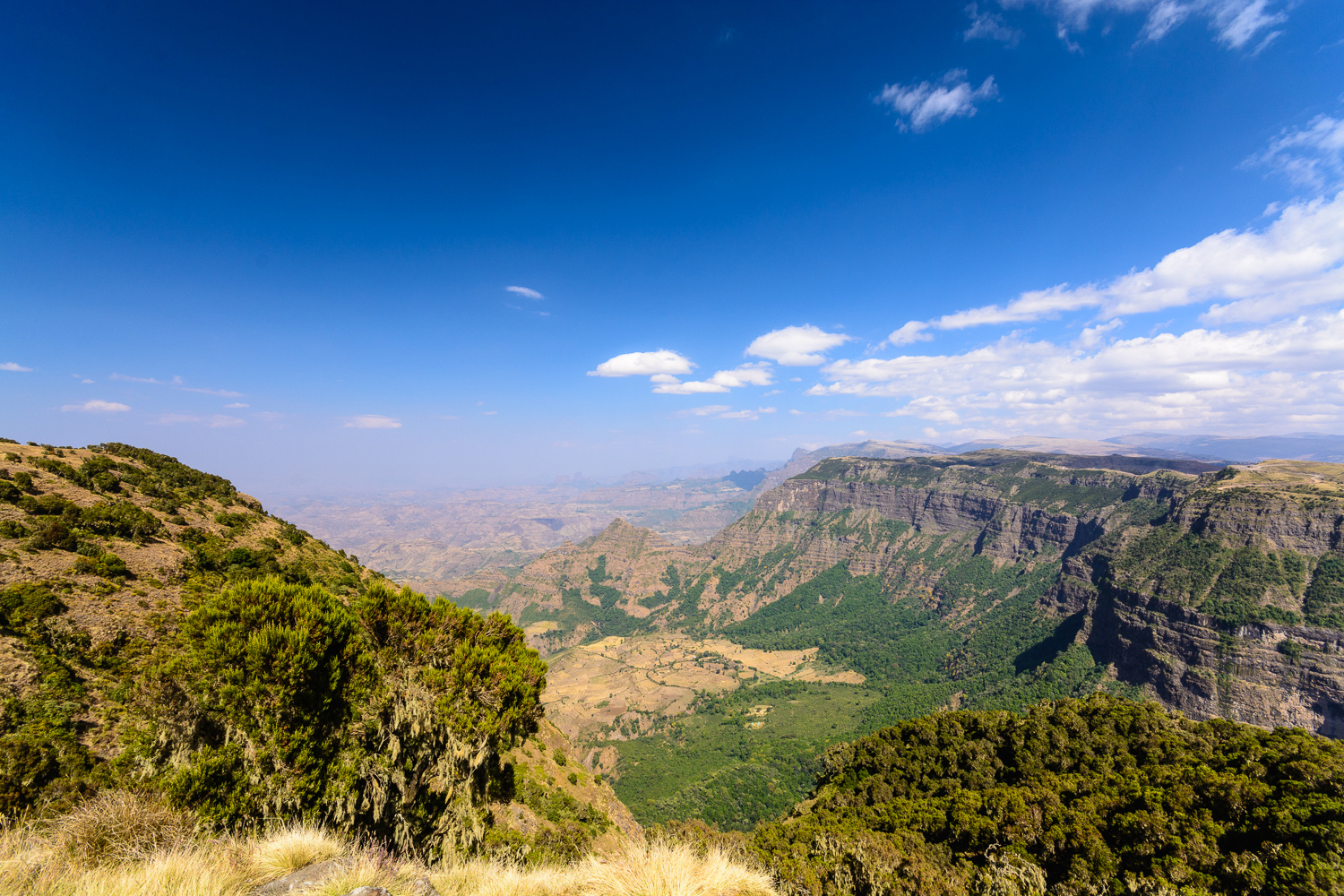
Amazing scenery aside, the Simien Mountains are home to several animals endemic to Ethiopia, such as the gelada monkey, the critically endangered walia ibex – with an estimated entire population of approximately 500, and the Ethiopian wolf – the rarest and most endangered canid in the world, with less than 500 left in the wild. Geladas are amazing and intelligent ‘old world’ monkeys; the males have vampire-like canines, which they bare frequently, and golden manes that wouldn’t look out of place in a shampoo commercial! According to fossil records, they were once found all over Africa and into the Mediterranean and Asia, but they are now only found in the mountains of Ethiopia.
Thanks to their falsetto cries, explosive barks and soft grunts, they have one of the most varied repertoires of all primates. Grazing primarily on grass, these noisy herds are easy to follow, except at night when they disappear over the edge of the steep cliffs to sleep on tiny ledges out of the way of leopards and other predators. We could happily have spent hours watching them. We saw the ibex and heard the wolf (though sadly never saw it) and, given the heights we climbed, we had the rare vantage point of looking down on a variety of kites, eagles and vultures, including the lammergeyer, known as the ‘bone breaker’ for its habit of dropping animal bones from great heights to smash them open and reach the marrow inside.


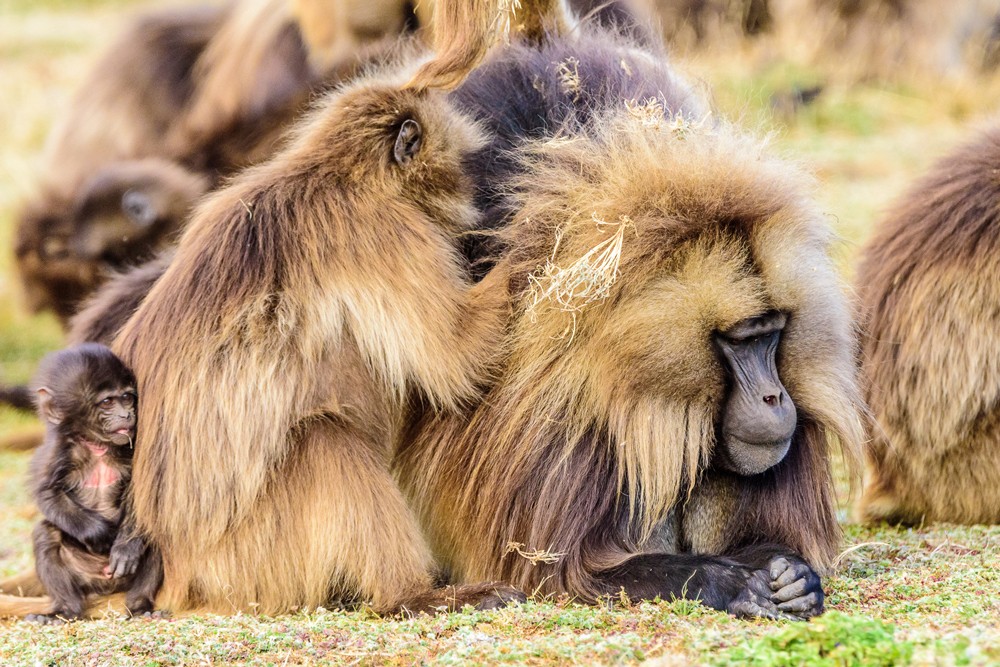
A remnant of the more unsettled times in Ethiopia’s past is the prevalence of weapons. 80-90% of households own a gun, and the bulk of the adult male population has either served as soldiers or are still members of various militia groups, which are a bit like reserve soldiers. Hiring a local ‘militiaman’ to accompany you as a scout when trekking in the Simien Mountains is compulsory. These militiamen are approved by the national parks authority to work as scouts and to accompany you throughout the park, ostensibly to keep you and your possessions safe, though at no point did we feel threatened or that the gun was really necessary. The scouts are generally local farmers who take on this role to earn an extra income. The effortless way that our scout slung his Kalashnikov over his shoulders didn’t exactly fill us with confidence as to his weapon handling proficiency. Still, the thought of an armed man walking behind you up the steep hills, with his ancient gun pointed in the general direction of your butt, providing an extra incentive to keep moving – even on the steepest slopes!
Ethiopia has more to offer than mountains and scenery
Ethiopia also has more to offer than mountains and scenery. We travelled to the town of Bahir Dar to visit the 14th-century Ethiopian Orthodox monastery of Ura Kidane Mihret on Lake Tana. This may look like a somewhat uninspiring building from the outside, but after crossing the threshold, we were blown away by the 700-year-old paintings that covered every inch of the interior walls. Created by monks using only natural pigments from crushed berries and plants, the paintings spectacularly depict biblical scenes and Ethiopian mythology that have survived the ravages of time. Lake Tana is the source of the Blue Nile, and the Blue Nile Falls are situated nearby, though frankly, at the time of year we visited, these were not worth the several hours spent driving on bad roads to get there.
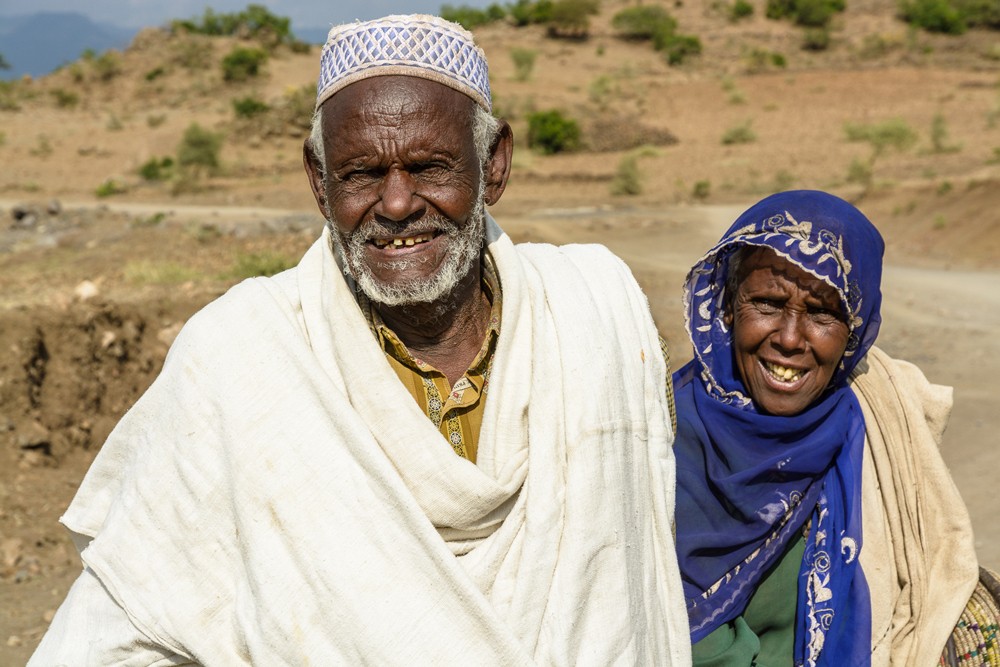
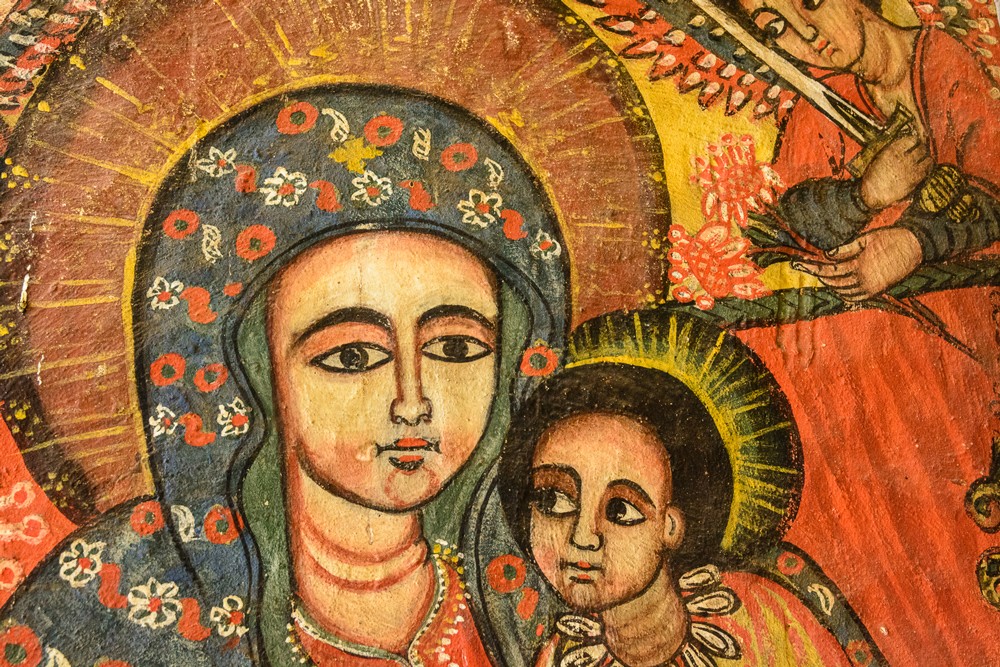

Even more spectacular are the ruins at Gondar. Nestled in the Simien Mountains’ foothills, Gondar was Ethiopia’s ancient capital. Sometimes referred to as the ‘Camelot of Africa’, the city has an impressive royal enclosure of castles and palaces dating back to the 1600s. Gondar is also home to the church of Debre Birhan Selassie, with its walls decorated with paintings of biblical scenes and its ceiling painted with beautiful winged angels.
To top it all was Lalibela in the mountains of northern Ethiopia. Here, we visited the 11 medieval churches, which are all over 800 years old and all carved by hand out of solid rock with ‘the help of angels’. Emperor Lalibela started the construction of these churches after having lived for some time in Jerusalem.
Following Jerusalem’s capture by Muslim forces in 1187, legend has it that a dream told Emperor Lalibela to recreate the splendours of Jerusalem in Ethiopia.
Lalibela has lost none of its power to incite awe, even centuries after its creation. Even more incredible is that, despite their age, these churches are still tended to by white-robed priests who speak Geez – an ancient Semitic tongue. Hermits still live in tiny caves in the walls of the church’s courtyards, and people still pray in these churches every day.
We hiked from our hotel in Lalibela, at an altitude of 2,600 metres, to the 12th-century Asheten Maryam monastery, which towers over the town at a height of 4,000 metres. As we climbed through local villages, we were greeted with calls of “selamta” – meaning ‘welcome’ – and for much of the climb, we were accompanied by an old man wrapped in a ‘repurposed’ Ethiopian Airlines blanket, herding his donkey up the mountain. He derived great enjoyment from my husband’s red-faced huffing and puffing; occasionally, he would place an arm around his shoulders and chuckle with delight as if to some private joke.
Upon reaching the top, the views over Lalibela and the countryside were beautiful. The monastery was the first of the famous Lalibela churches to be started, though the last to be finished, and is still an active church today. About 20 tourists a day visit Asheten Maryam, mostly arriving by bus and scrambling the last short, rocky stretch to the monastery. Apparently, only one or two people per day are “foolish” enough to walk the five-hour round trip like us!

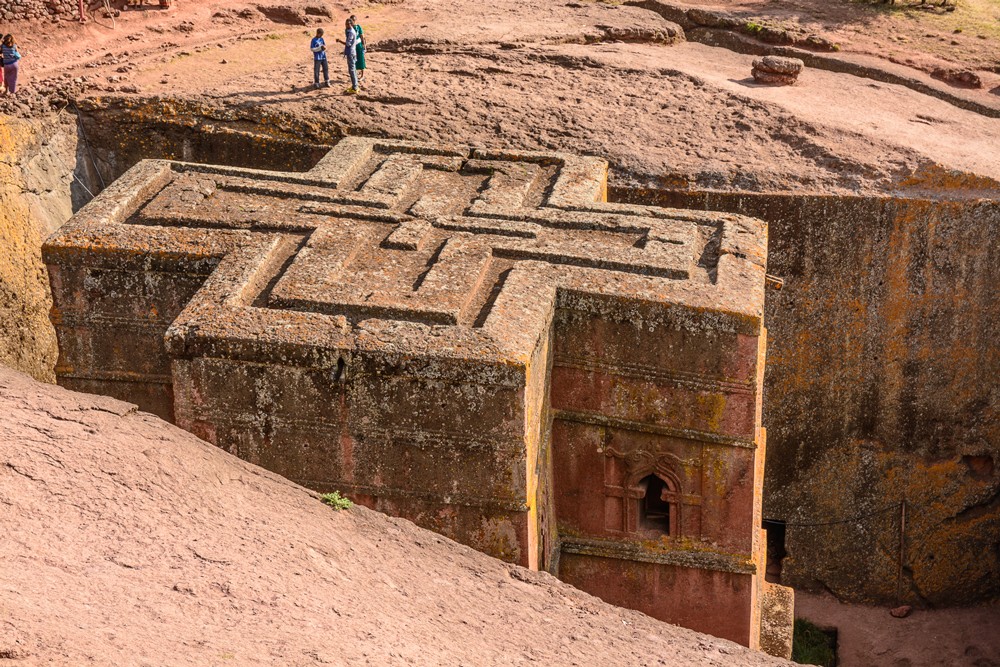

Best time to visit
The best time to visit the Simien Mountains is in October and November to avoid the rainy season. The dry season is from October through to May, and the wet season runs from June to September.
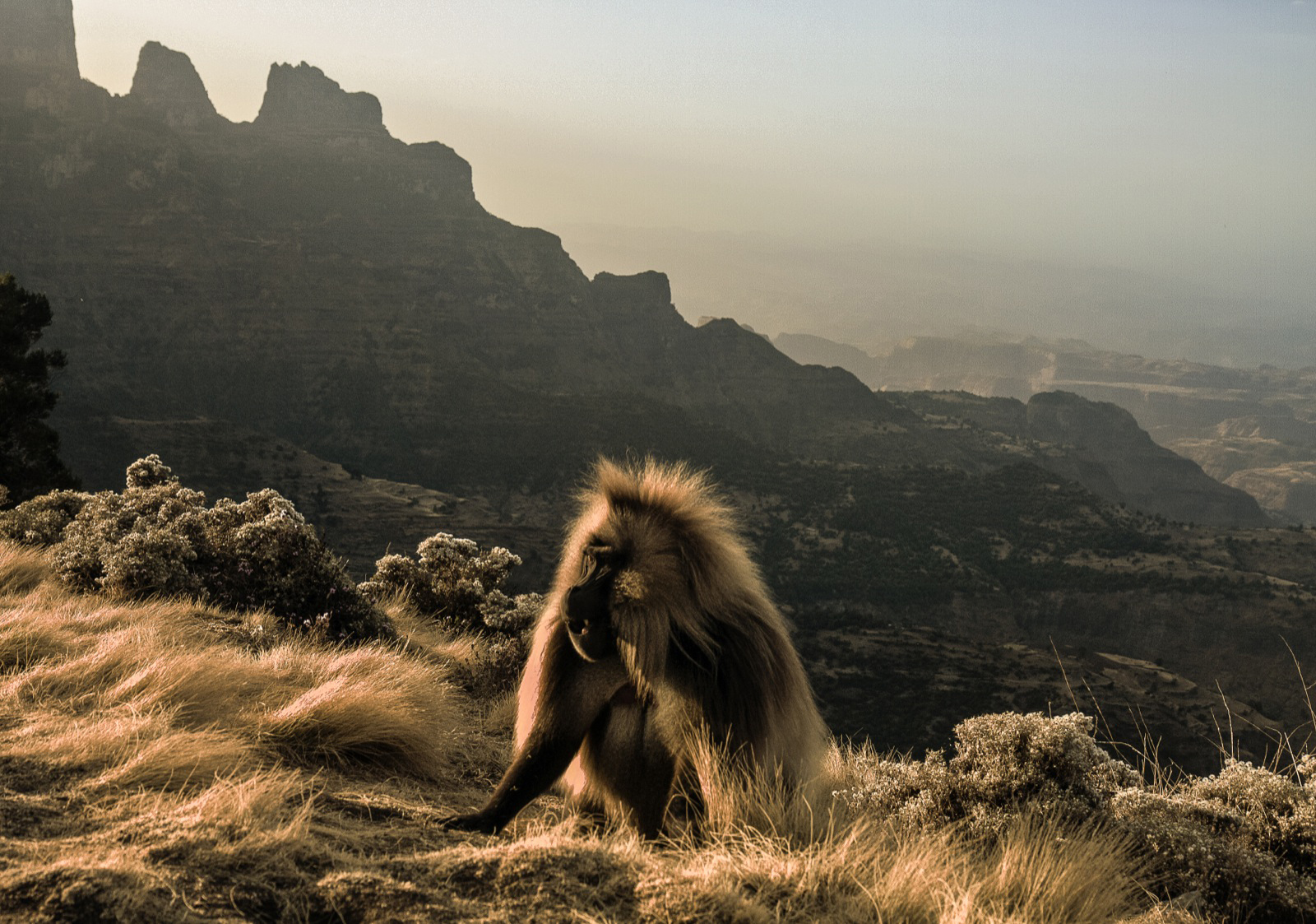
Health and safety
There is a chance of catching malaria in many parts of Ethiopia, especially in areas below 2,000 metres (6,500 feet). However, Addis Ababa and Ethiopia’s highlands, which include the historical circuit and the Simien Mountains, are at high elevations, so are considered low-risk areas for malaria.
Nevertheless, you may still wish to take precautions. High altitude, however, can manifest itself in several ways, but these altitude-related side effects are not harmful to most individuals.
Travelling in Ethiopia is mostly safe, but you should take the same precautions as you would in any undeveloped country. It is also wise to avoid all border areas as there are still pockets of political unrest.
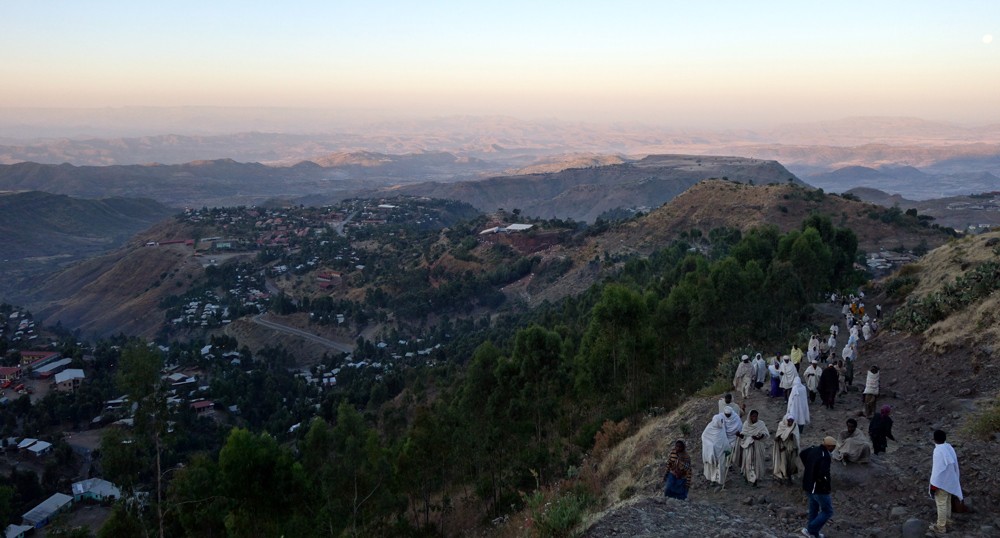
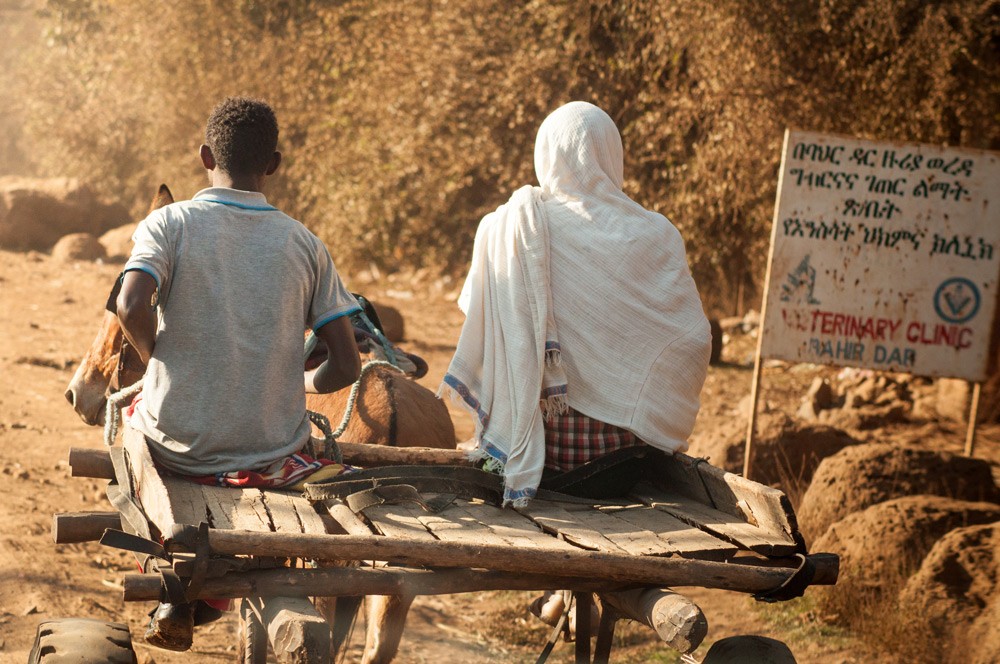
Where to stay
 Find out about Ethiopia for your next African safari – find a ready-made safari or ask us to build one just for you.
Find out about Ethiopia for your next African safari – find a ready-made safari or ask us to build one just for you.
Ethiopia is an experience like no other. Stunning scenery, incredibly rare wildlife, amazing people, and history and ancient culture combine to make it a must-visit destination. If you’re a happy camper, you’ll be pleased to know that there are a few designated camping spots along the hiking trails in the Simien Mountains. We were fortunate to have our travels impeccably organised by Shif Asrat of Simien Trek, who not only seamlessly arranged all of our logistics but also owns Limalimo Lodge – a fabulously located, sustainable luxury eco-lodge located on the edge of the escarpment overlooking the Simien Mountains National Park. This lodge is a perfect place to relax and recuperate after the exertions of trekking.

What to do in Ethiopia
Must-visit places include Lake Tana, Gondar, Lalibela and Axum – all of which can be reached by reliable and regular Ethiopian Airlines domestic flights. You can go by road between towns, but distances are far and, as tourists are not permitted to hire vehicles without a driver, and local buses are not recommended, you will have to use a registered travel company to organise transfers.
The Simien Mountains National Park lies at an altitude ranging between 3,000 and 4,500 metres and is a relatively small slice of a vast mountain range. It has pretty much one trail running through it with various extensions to embark upon, depending on the amount of time and energy you have.
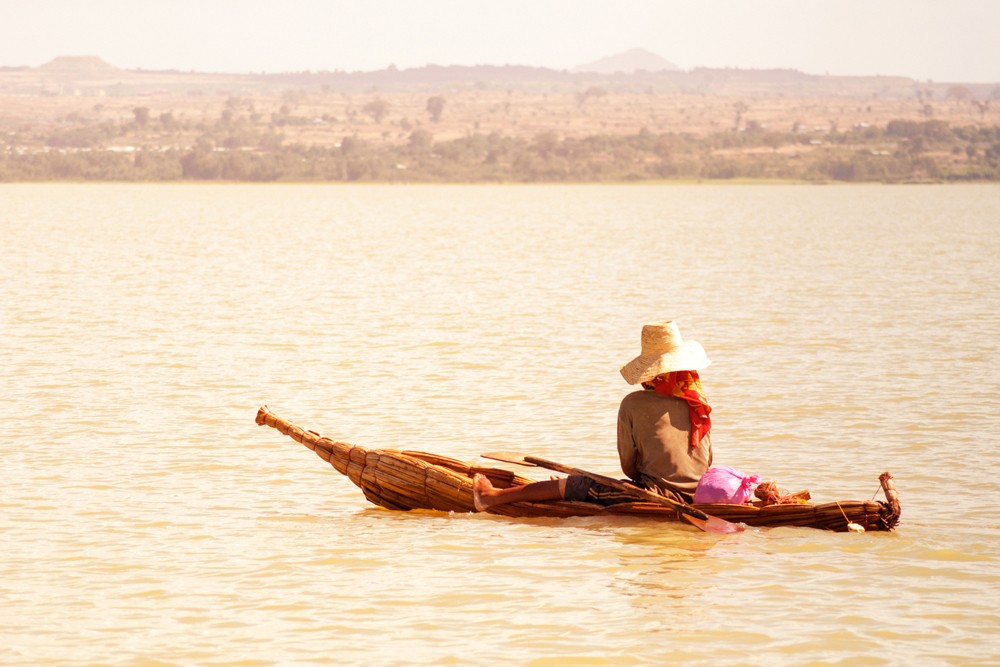

Getting to and around Ethiopia
We flew Ethiopian Airlines, and it is worth noting that if you arrive in Ethiopia on an Ethiopian Airlines international flight, you are eligible for substantial discounts on your domestic flights with the air carrier. There are daily flights to Addis Ababa from both Cape Town and Johannesburg and numerous flights daily between the towns of Gondar, Bahir Dar (Lake Tana), Lalibela and Axum. If you plan to arrive by road, it is advisable to check with your embassy beforehand to find out which borders can be safely crossed.
In general, distances by road in Ethiopia make for long journeys. So if you don’t have a lot of time on your hands, some domestic flights will make a difference.
If you have less than two weeks, I recommend taking some flights, or you’ll spend almost the entire time on the road.
Almost every nationality needs a visa to enter Ethiopia. Single-entry tourist visas that last one to three months can be issued upon arrival at the Bole International Airport in Addis Ababa for most nationalities, but it is worth contacting your local Ethiopian embassy for up-to-date visa information. Proof of an onward or return ticket is frequently requested upon arrival in the country. If you’re planning to enter Ethiopia by land, obtain a tourist visa in advance from your local Ethiopian embassy and consider that this will be valid from the date of issue.
One thing’s for sure – whatever you choose to do or however you choose to do it, a trip to this magical country in the Horn of Africa will surely leave you mesmerised.

About the author
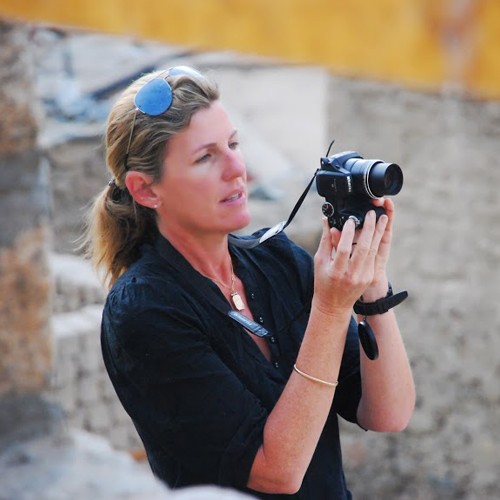 Born and raised in Sydney, Australia, before moving to Africa at age 21, Sarah Kingdom is a mountain guide, traveller, and mother of two. When she is not climbing, she also owns and operates a 3,000-hectare cattle ranch in central Zambia.
Born and raised in Sydney, Australia, before moving to Africa at age 21, Sarah Kingdom is a mountain guide, traveller, and mother of two. When she is not climbing, she also owns and operates a 3,000-hectare cattle ranch in central Zambia.
She guides and runs trips regularly in India, Nepal, Tibet, Russia, Turkey, and Uganda, and takes travellers up Tanzania’s Mount Kilimanjaro numerous times a year. She will definitely be adding tours to Ethiopia to her repertoire in 2016, so don’t hesitate to drop her a line if you’d like her to lead the way.
To comment on this story: Login (or sign up) to our app here - it's a troll-free safe place 🙂.![]()






